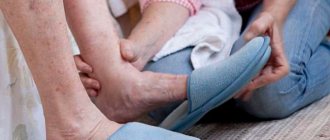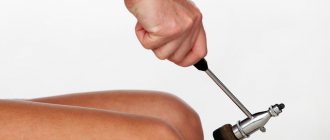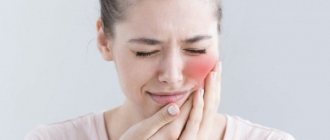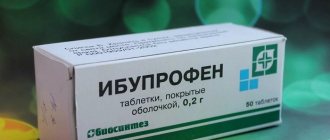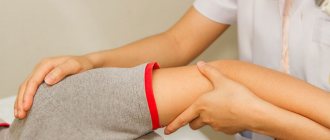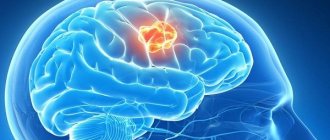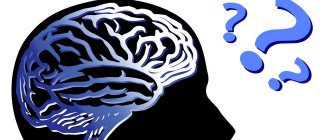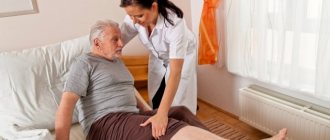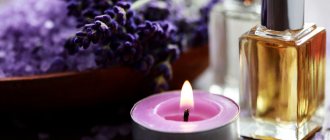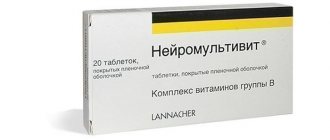Can a mother be a rehabilitator for her child without special education? Is effective rehabilitation of cerebral palsy possible at home? My answer is CAN! There would be a desire. Unfortunately, most often, mothers who are exhausted by physical and emotional stress, household chores and child care have no strength left for self-motivation to take any action. In addition, there is not enough knowledge on how to conduct classes correctly so as not to cause harm with your amateur activities. Therefore, many parents place their hope only in doctors. And in vain.
Firstly: because the rehabilitation process should become a way of life for your child. And accompany him not only for many years, but in a good way all his life. Rehabilitation in specialized centers is not cheap. It’s good if the family budget allows you to use the services of the centers constantly, but what if not?
Secondly: even after completing a good course of rehabilitation with highly qualified specialists and receiving an excellent result, after some time, parents begin to notice “kickbacks” in the opposite direction from the results. They change clinics and doctors, but the situation repeats itself again and again. It becomes clear to many that they need to somehow maintain the results during the inter-rehabilitation period, so as not to start all over again next time, and increase the dynamics of the results. This means you need to study at home .
Release form and composition
Cerebral palsy is a group of diseases. They are most often congenital. The disease manifests itself in several disorders:
- spasticity when hypertonicity is observed;
- athetosis: involuntary movements;
- ataxia: impaired coordination when the child speaks poorly, often falls, moves unsteadily and has a characteristic gait.
There is a set of certain factors that influence the development of the disease:
- intrauterine infections and viruses;
- oxygen starvation caused by difficult childbirth, aspiration, maternal illness;
- Rhesus conflict;
- hemolytic jaundice;
- disruptions in the functioning of the fetal central nervous system due to stress or physical exertion of the pregnant woman;
- pathologies of the vascular system causing a lack of nutrients;
- traumatic brain injury in early childhood;
- child intoxication;
- genetic predisposition.
A possible consequence of all of the above is cerebral palsy - a pathology of the central nervous system caused by damage to the brain. A parent who learns that their child has been diagnosed with cerebral palsy is frightened. Then adults begin to actively look for ways to solve the problem, learn about new techniques and medications.
It is believed that Dysport was developed to help children with cerebral palsy correct "toe walking." A similar neurological syndrome occurs in cerebral palsy. Due to the spasm, the child cannot step on the foot completely, starting with the heel; it is as if he is constantly standing on his toes. This manifestation is caused by tension in the calf muscles of the legs. Botulinum toxin type A stops the transmission of impulses from nerves to muscles: the medicine blocks the release of neurotransmitters - acetylcholines, after which the spasm subsides.
During normal operation of the central nervous system, the brain sends signals through nerve fibers to the muscles to contract or relax. When a failure occurs, the commands are received incorrectly, resulting in excessive stress. To alleviate the patient's condition, it is necessary to interrupt the flow of nerve impulses and reduce spasticity.
Dysport therapy, eliminating tension, allows the leg to grow correctly, which is extremely important for the development of the child: the risk of contracture is reduced, the need for surgery is no longer so acute, and there are chances for good motor development.
The most well-known product with botulinum toxin is Botox, but it is more often used in cosmetology. Botox for cerebral palsy is used as an analogue of Dysport. Therefore, there is no need to confuse the two drugs, because they are not the same thing, but two different drugs. Their units of action do not match.
Dysport is available in powder form for injection. Dissolves in 0.9% sodium chloride. Compound:
- active ingredient - botulinum toxin type A;
- albumen;
- lactose.
Clover red
The great Avicenna, who left an indelible mark on medicine, considered clover one of the most useful medicinal plants.
In its action, clover is similar to ginseng. It also increases vitality, restores strength after physical exertion and illnesses. In addition, clover promotes wound healing, removes excess water from the body and eliminates vitamin deficiency. Try to energize your body and saturate it with essential vitamins. To do this, it is enough to drink an infusion of fresh flowers during clover flowering instead of the usual juices and tea. Clover helps relieve increased muscle tone, which is why it is used in the treatment of cerebral palsy.
This effective folk remedy is used both internally and externally and is prepared as follows. Place 25 grams of clover heads (along with seeds) in an enamel bowl, pour in a glass of olive oil and dry white wine. The mixture is kept on fire until all the liquid has evaporated. Cool and strain. The resulting ointment is rubbed on the paralyzed limbs and three drops are taken orally every day.
Common wormwood
In folk medicine, wormwood is most often used. However, common wormwood, which has a number of beneficial properties, is also not forgotten. For example, using it as a seasoning for fried meat, you can facilitate the digestion of fairly heavy foods and help normalize the functioning of the stomach and intestines. Wormwood tea is indicated for intestinal upset and bad breath, and unsweetened decoctions and infusions are used to improve liver function and bile flow. Wormwood saves you from dizziness and relieves headaches, treats stomach and uterine diseases, and helps cope with nervous disorders.
Traditional medicine advises not to neglect herbal infusions in case of cerebral palsy. Particularly effective is the collection of two parts of wormwood root and one part of valerian root, peppermint leaves and St. John's wort herb. From a tablespoon of the mixture and a glass of boiling water, tea is prepared, which is infused for half an hour, filtered and taken three times a day, a tablespoon before meals.
Row
Most often, the row is called “bathing” grass. This name is quite justified. Baths with a decoction of the string help fight diathesis, diaper rash, neurodermatitis, eczema and urticaria. Seed oil extract promotes the healing of wounds and ulcers. But the plant can also be used internally. An infusion from this plant has soothing, anti-inflammatory, antitoxic, antiallergic, choleretic and restorative properties. It is also effective in getting rid of such a difficult-to-treat disease as psoriasis.
Therapeutic baths will help relieve spasticity. To prepare this folk remedy, you will need the following ingredients: a glass of string and stinging nettle, and half a glass of mistletoe herb, tansy and medicinal sage, bay laurel leaves, birch buds, asparagus roots, rosemary branches and juniper berries. Pour one hundred grams of thoroughly mixed herbal mixture into two liters of water and bring to a boil. Warm over low heat for ten minutes. Infuse overnight and strain the product and add it to a bath filled with warm water. The duration of the water procedure is about 20 minutes. After taking a bath, put the child in bed and after an hour, rub the sore limbs, for example, with tincture of shepherd's purse.
Shepherd's Purse
Shepherd's purse grass is rich in ascorbic acid, carotenoids and vitamin K. This composition allows the plant to be used for bleeding, including uterine and gastrointestinal. Preparations based on shepherd's purse have a good effect for colds, vomiting, tuberculosis, urinary incontinence, inflammation of the kidneys and urinary tract.
shepherd's purse infused with alcohol is a well-known folk remedy that alleviates the symptoms of cerebral palsy. This medicine is especially effective after water procedures, for example, herbal baths. Pour 100 grams of alcohol into 25 grams of shepherd's purse and let it brew for fourteen days in a warm and dark place. Rub the strained infusion daily on the affected limbs.
Sophora japonica
What is contained in the buds and beans of Sophora rutin prevents the fragility of capillaries, normalizes blood pressure, and cleanses the walls of blood vessels from cholesterol plaques. Tinctures from this plant help restore immunity, have an antiallergic effect, and regulate metabolic processes, including in diabetes.
To prepare a folk remedy that relieves muscle tone in cerebral palsy, grind 50 grams of sophora through a meat grinder and pour 250 grams of vodka into the resulting pulp. Infuse the product for 10 days and take three times a day. Children take three drops of milk, and adults take a teaspoon.
Rose hip
Rosehip occupies one of the leading positions in the popularity rating of traditional healers and herbalists. This plant is called a “forest healer”, capable of, if not everything, then a lot. The high concentration of vitamins, microelements, tannins and essential oils makes preparations from the roots, fruits, flowers and branches of the plant indispensable for the treatment of vitamin deficiency, anemia and improving immunity. Rose hips have diuretic, choleretic, healing and anti-sclerotic properties.
Therapeutic baths are one of the important elements of the treatment of cerebral palsy. Try an effective folk recipe for a bath with a decoction of rosehip roots. Three tablespoons of plant material should be poured into a liter of water and boiled, covered, for an hour. The strained broth is poured into a bathtub filled with warm water. The frequency of taking such water procedures is 2 times a week.
Treatment of cerebral palsy is a complex and lengthy process. However, modern medicine can help sick children, and traditional methods can facilitate the process of treatment and rehabilitation. Traditional medicine for cerebral palsy is not limited to herbs. One of the most effective ways to return a child to normal life is treatment with the help of horses and dolphins, which can put the child back on his feet. The combination of special massages, recipes of traditional and alternative medicine will allow the child to maximize the effectiveness of therapy.
Indications for use
Dysport in neurology is prescribed for diseases that contribute to muscle tension:
- increased blinking;
- blepharospasm (eyelid twitching);
- strabismus;
- hyperhidrosis of the axillary region (excessive sweating);
- pathology of the facial nerve;
- cervical dystonia (torticollis);
- wrinkle correction;
- myofascial syndrome;
- hand spasticity in adults after stroke.
As for cerebral palsy, here it is used for:
- spastic diplegia and hemiplegia;
- for dystonic and hyperkinetic forms of the disease;
- diffuse muscle spasticity, accompanied by delayed psychomotor development;
- with adductor spasm in the legs;
- flexor installation in the hands, bending the palms;
- adductor contracture in the shoulders;
- dynamic deformation of the foot.
The main disadvantage of Dysport is its short-term effect: the effect lasts for a maximum of six months, then you either need to repeat the procedure or look for other ways to solve hypertonicity.
Dysport does not cure, but rather relieves symptoms by eliminating spasticity. It has been noticed that the medicine is indeed capable of relaxing muscles, but not in all cases: it helps with milder forms of cerebral palsy. There is a small percentage of patients who are insensitive to botulinum toxin type A, then there will be no effect from therapy at all.
Dysport is used in the palm, Dysport for the foot, hips, arms, lower legs - depending on where excessive tension is observed. The medicine relieves pain and muscle spasms. According to statistics, out of 75 patients who received such injections, 12 began to walk independently, 19 began to walk with support, and 15 children began to sit.
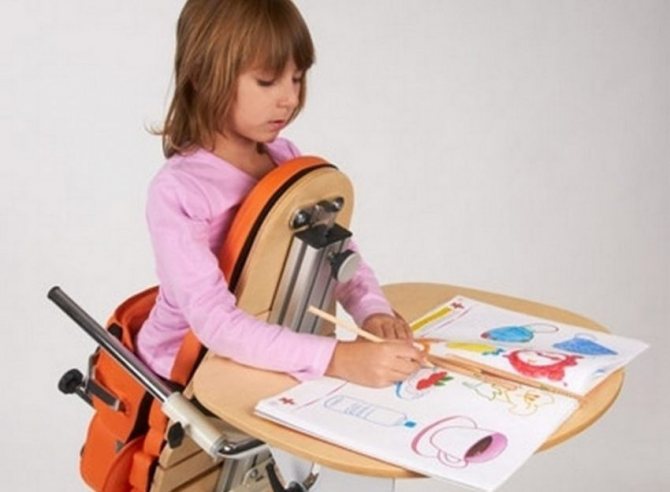
Other methods
To summarize, we can say that doctors try to rehabilitate the child in all available ways, using:
- various massage tactics;
- therapeutic exercises;
- reflexology and IRT;
- treatment according to the Voight method;
- kinesiotherapy;
- pneumatic suits, load suits;
- speech therapy techniques;
- current treatment;
- auxiliary technical devices.
If necessary, treatment is supplemented with drugs that reduce muscle tone: Mydocalm, Baktofen and products that contain botulinum toxin derivatives, for example, Botox or Dysport.
Much attention is paid to the treatment of concomitant diseases and syndromes, for example, epilepsy and personality disorders.
In the early stages, not only cerebral palsy is treated, but also the underlying disease, against the background of which spastic motor disorders developed. Children are advised to regularly rest at resorts and sanatoriums; classes with elements of anti-malnutrition are possible.
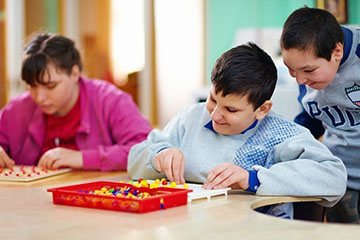
Teaching patients the principles of play, especially in combination with musical and rhythmic exercises, will contribute to the development of motor skills, the skill of conscious hand movements, knowledge of the surrounding world and thinking.
It will also increase the stock of ideas and information about objects, improve speech and increase social activity, help in mastering logical and grammatical structures, and correct violations of higher cortical functions.
Treatment and physical therapy are most effective before the age of 8, when parents need to make every effort to rehabilitate the child. It is during this period that the brain actively develops, forcing healthy parts to take responsibility for performing lost or impaired functions. The sooner treatment begins, the more chances the child has to socialize.
Children diagnosed with cerebral palsy remain disabled for life. But modern rehabilitation of children with cerebral palsy allows the child to undergo social and muscular adaptation. This way the child can live a normal life and work.
How to suspect the development of a brain tumor in a child? The main symptoms are described here.
Contraindications
Dysport is not allowed:
- pregnant and lactating women;
- in the presence of an infectious disease, for example, ARVI. The procedure is carried out after recovery;
- with hypersensitivity to any of the components;
- children under two years of age;
- for bleeding disorders;
- diseases of the endocrine system;
- disruptions of the neuromuscular impulse;
- myopia (nearsightedness);
- if the functions of swallowing and breathing are impaired, care must be taken not to cause respiratory arrest;
- in the presence of chronic respiratory ailments, aspiration may begin.
Indications and contraindications
The drug itself has a number of indications for use. These include:
- Hyperhidrosis – excessive sweating of the armpits, palms of the hands and other parts of the body;
- The presence of wrinkles around the eyes, in the forehead, nasolabial folds, bridge of the nose;
- Desire and need to correct the shape of the upper and lower lips, corners of the mouth, brow ridges;
- Increased activity of the masticatory muscles, causing discomfort during sleep (teeth grinding);
- Disorders of the nervous system, including congenital malformations of the central nervous system, post-traumatic complications, iatrogenic development of spasm of the muscles of the extremities.
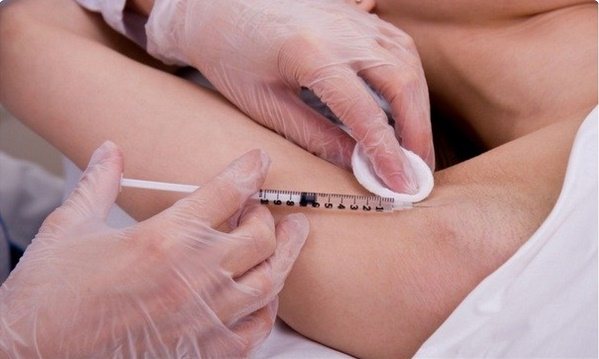
Contraindications are divided into two large groups: temporary and permanent. The first include:
- Taking medications such as antibiotics and synthetic antibacterial agents, anticoagulants, antiplatelet agents and baclofen;
- Pregnancy and lactation;
- A number of acute infectious diseases and chronic ones in the acute stage;
- Children's age without indications;
- Postoperative period for three months;
- Inflammatory pathologies of non-infectious nature in the area of drug administration.
Permanent ones include the following list of concomitant diseases:
- Hemophilia;
- Hypertonic disease;
- Acute or chronic failure of organ systems (respiratory, cardiac, renal);
- Diabetes;
- Thyrotoxicosis and myxedema;
- Individual intolerance and allergic reaction to the main component of the medication;
- Myopathies and myasthenic syndrome;
- Leukemia;
- Benign and malignant neoplasms;
- Epilepsy.
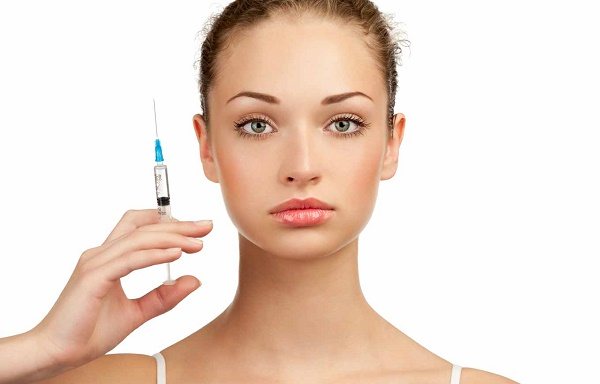
Before the procedure of pricking certain areas of the skin, drinking coffee, alcoholic beverages, and smoking is excluded. After administration of Dysport, you should not lie down for several hours. For seven to ten days or during the entire course, taking antibiotics, increased physical activity, overheating and taking warm baths is prohibited.
Directions for use and dosage
Administration of the drug always takes place in a sterile hospital environment. In essence, there is a “pinning” of a muscle, for example, the calf muscle. The procedure can be quite painful for the child, especially when the selected area is hypersensitive.
Only a trained specialist has the right to administer the drug. The dose is calculated individually. The main thing that the doctor relies on in his calculations is the patient’s weight: 10 - 30 units per kilogram. The total quantity should not exceed 1000 units. If the muscles are too small, then the dose is further reduced so as not to cause excessive weakness.
Before administration, the doctor explains in detail to parents the principle of action of the drug, its effect on the child’s body, possible side effects, and the expected result. The ampoule with the medicine is always opened in the presence of the parents so that they can see it. Next, points for injections are outlined. The specialist determines the injection sites and their number depending on the child’s condition and where the tone is greater. Sometimes it is necessary to conduct electromyography, where the injection sites will be more accurately shown.
Dysport for cerebral palsy is prescribed in courses as needed with an interval of at least twelve weeks. The effect begins to appear within the first seven days: if the injections were made into the lower leg, the baby will begin to step on a full foot. When in the hip, it will be easier for the child to move his knees. It is noteworthy that at first it is difficult for a small patient to get used to the new condition, since now his legs or arms move completely differently.
The effect of the drug does not last long. After a certain time has passed, hypertonicity returns. While the remedy “works,” parents should carry out rehabilitation activities as much as possible. Then there is an improvement in joint mobility, and the muscles adjacent to the injection site begin to strengthen. Consequently, the child moves better. Moreover, the acquired skills do not necessarily disappear after the medication wears off.
How many times to repeat the procedure is decided by the neurologist and the parents of the patient with cerebral palsy. With positive dynamics and obvious improvements, injections can be done continuously. There are no restrictions in this matter - this is a plus of this treatment. It has been clinically proven that the drug works especially well in the first ten years of a child’s life.
Precautions after the procedure:
- the patient is under the supervision of a specialist for the first fifteen minutes;
- Within a month you should avoid saunas, hot baths, and paraffin applications.
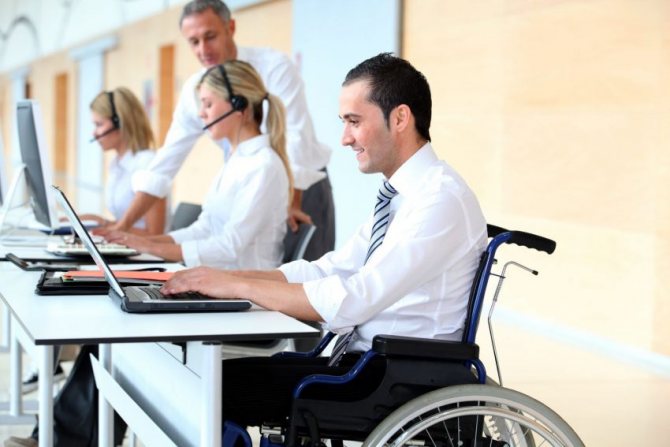
Level of evidence
In 2013, Novak et al., based on their systematic review, developed a framework reflecting the evaluation of various methods used in working with children with cerebral palsy from the perspective of evidence-based medicine. The purpose of their work is to facilitate the choice of intervention options to achieve a certain result. They outlined treatments using a bubble chart, with the size of the bubble correlating with the amount of published data.
The size of the circle was determined by the following criteria:
- Number of published works on the topic.
- Overall level of evidence score (calculated by reverse coding the Oxford Levels of Evidence, i.e. expert opinion = 1 point, randomized controlled trial = 5 points).
- The location of the circle on the Y-axis of the graph corresponds to the rating system.
- The color of the circle corresponds to the degree of effectiveness of the method (Fig. 1 and Fig. 2).
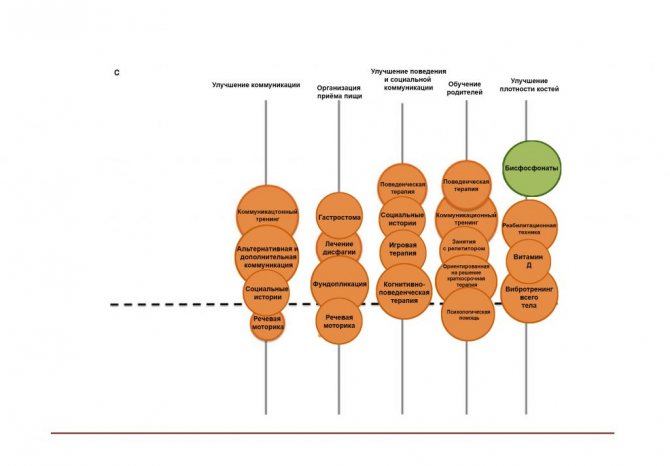
Side effects
- Urinary incontinence.
- Weakness of the leg muscles.
- Diarrhea.
- The abnormal influence of the toxin causes an unnatural gait, and falls and injuries are possible. The patient cannot keep the body in balance.
- The temperature rise is within 37.7 - 38 degrees. The condition is similar to the feeling of the flu. It goes away in two or three days.
- Due to punctures, irritation and a burning sensation appear on the skin. Bruising may occur in the injection area.
A systemic side effect when spasticity occurs in combination with muscle hypotonia is muscle weakness. It lasts up to three weeks. The risk of developing a negative reaction to the drug is reduced if you follow the dosage and do not exceed the norm.
Doman method: cons
Almost any method has its strengths and weaknesses, and the developments of Glen Doman are no exception. His methods are accompanied by several significant disadvantages. First of all, this method assumes that parents, in particular the mother, will be completely devoted to the baby
That is, a woman who wants to raise a genius according to Doman must devote her life to the learning process - endlessly prepare cards, and then show them to the child day after day
Also, many parents do not like the fact that during training using the Doman method, the child is passive. He just sits and watches, and the leading role belongs to the parent or teacher - he shows cards, reports facts. During classes, the baby cannot turn around, ask for cards, or take them hands and even ask questions. There is no live dialogue or conscientious creative process between the child and the parent.

This technique is more like training
There is a high probability that a child artificially stuffed with information will eventually turn into a passive adult who simply will not be able to apply his numerous knowledge in practice
Moreover, any attempt at activity and independent knowledge of the world by followers of Glen Doman is immediately suppressed
With this approach, the child does not develop textual and analytical thinking - he simply does not learn to independently extract information, but receives ready-made information.
For normal speech development, it is important for a child to listen a lot, and for parents to tell and read to him a lot, sing and play music.
Thus, the child learns to “complete” the visual sequence with what he perceives by ear. In this regard, the traditional Slavic nursery rhymes, ditties, pestushki and finger games work great. Glen Doman’s method excludes activities of this kind And even if parents are ready to include them in system of a child’s education, then there is simply no time left for them. Perhaps, all these shortcomings are a consequence of the author’s incorrect definition. The fact is that a neurosurgeon compares the human brain with a computer, into which you just need to have time to put a large database in. But any child is , first of all, a living emotional being, and not artificial intelligence. It cannot be limited to such strict limits, otherwise the result will be knowledge divorced from life. It is much more important to teach a child to interact with other people, to play various social roles
And with the intensity of classes that Doman offers, the baby simply will not have time to play with other children - he will develop strictly in his family and communicate with his parents using cards
Doman's method excludes the presence of kindergartens and assumes only home schooling. Moreover, the author believes that children do not need ordinary games and toys. He claims that all these are tricks of adults who do not have time for their own children. However, it is through play that children learn to live different roles, develop imagination and creativity
By the way, young children have very well developed instincts and, as a rule, they actively resist the Doman education system - they do not want to sit still, they grab cards, older children provoke their parents into dialogue by asking questions
This does not mean at all that Glen Doman’s method is so bad. Any theory can be modified in practice, based on the individual characteristics of the child and adapting it to the conditions of each individual family. So Cessile Lupan wrote a whole book on this topic. It is called “Believe in your child” The author shares with readers his experience of applying the basics of the Doman method in combination with other early development systems
Review from Yulia's about the technique
Regarding the Domans: I admire the work of Glenn and his family. But in practice, very, very, very many families: the intellectual is wonderful. But the motor program is a big question. For some reason, many mothers are silent that it was she who increased the spasticity in their child. I know those who twisted into a donut after patterning and slides And only after 5-6-7 years, in agreement with the institutes, they leave the program as ineffective
Thanks to the slide, we ourselves got a pathological turn from the stomach to the back. While we couldn’t do it on the stomach, it hurts to lie on it. I understand this now, but before, too, out of ignorance and despair, I fought with the strength and tears of the child for the result. What???? And now I say this because I know that it is possible otherwise Without violence and pain, but in the way that the body is capable of at the moment And you can help it gently, carefully, with love And yes, there will be no forecast that this will lead to this - then the result is that the Body is freed from what bothers it the most. There is a completely different approach to people, to patience... After all, it’s not us who endure, to be honest, but our children... And all these forced rehabilitations... I just see a lot of examples that it works! But again, for those who are ready to hear and accept such a worldview
Analogs
- Botox. Muscle relaxant. Available in the form of a lyophilisate, administered intramuscularly. It is a complex of botulinum botulinum type A and hemagglutinin, 100 units per bottle. Human albumin and sodium chloride are used as excipients. Botox in our country is part of the standard treatment for cerebral palsy.
- Xeomin. Acetylcholine release inhibitor. Release form: solution for intramuscular administration. Ingredients: botulinum toxin, human serum albumin and sucrose. This drug is contraindicated for persons under 18 years of age, therefore it is not used in the treatment of cerebral palsy.
Other analogues of Dispor are Relatox and Lantox.
Treatment of cerebral palsy
Traditional medicine considers cerebral palsy to be an incurable disease. However, treatment of cerebral palsy is still necessary, since its advanced forms can lead to a number of serious complications
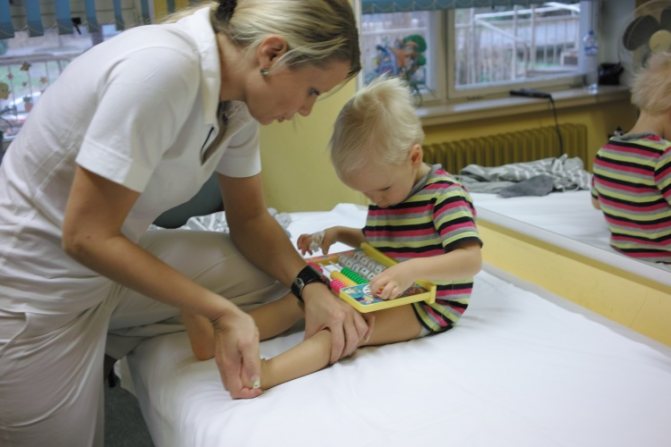
Currently, there are many cerebral palsy treatment centers that offer a comprehensive approach to reducing symptoms
